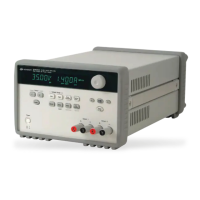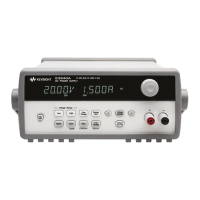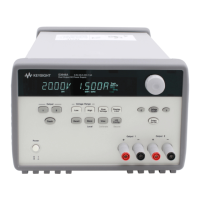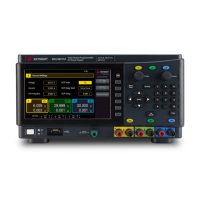Calibration Procedures 3
Keysight E3633A and E3634A Service Guide 67
10 Record the value displayed on the controller. This value should be within the
limit of (I
O
± 35 mA)
[1]
or (I
O
± 15.5 mA)
[2]
.
CC load effect (load regulation)
This test measures the immediate change in output current resulting from a
change in the load from full rated output voltage to short circuit.
1 Turn off the power supply and connect the output to be tested as shown in
Figure 3-1 with the digital voltmeter connected across the 0.01 Ω current
monitoring resistor (R
M
).
2 Turn on the power supply. Select the 8V/20A
[1]
or 25V/7A
[2]
range, enable the
output, and set the display to the limit mode. When the display is in the limit
mode, program the output voltage to the maximum programmable value and
the output current to the full rated value (20.0 A)
[1]
or (7.0 A)
[2]
.
3 Set the voltage of the electronic load to (6.0 V)
[1]
or (23.0 V)
[2]
to operate it in
constant voltage mode since a voltage drop occurs on the load wires when
(20.0 A)
[1]
or (7.0 A)
[2]
flows on the load wires. Check that the CC annunciator
is on. If it is not, adjust the load so that the output voltage drops slightly.
Record the current reading by dividing the voltage reading on the digital
voltmeter by the resistance of the current monitoring resistor.
4 Operate the electronic load in short (input short) mode. Record the current
reading immediately by dividing the voltage reading on the digital voltmeter
by the resistance of the current monitoring resistor. The difference between
the current readings in step (3) and (4) is the load regulation current. The
difference of the readings during the immediate change should be within the
limit of (2.25 mA)
[1]
or (0.95 mA)
[2]
.
[1] For Keysight E3633A Model
[2] For Keysight E3634A Model
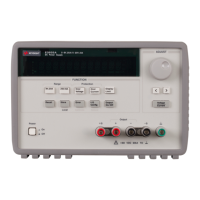
